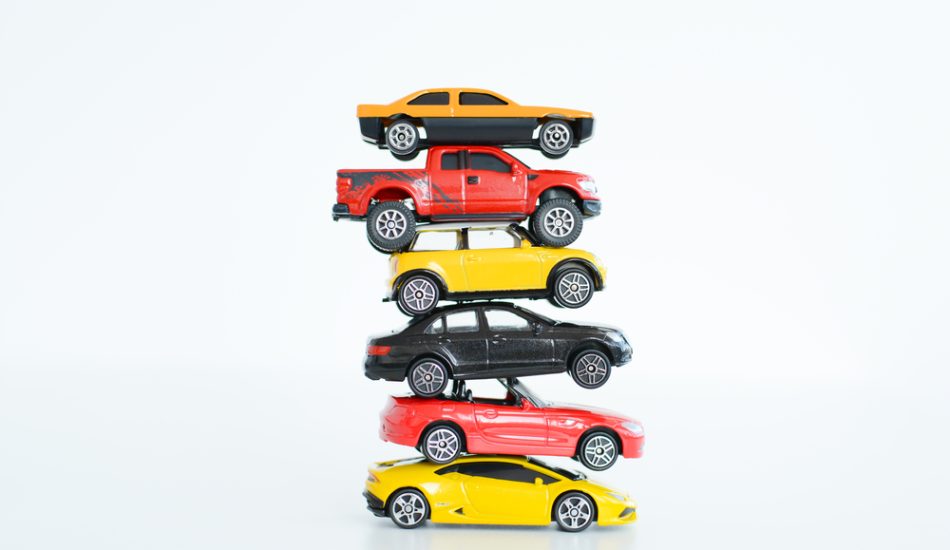4701 Oleander Drive, Suite A
Myrtle Beach, SC 29577
4701 Oleander Drive, Suite A
Myrtle Beach, SC 29577
What Does “Stacking” of Insurance Policies Mean in South Carolina?
Can you “stack” insurance policies in South Carolina?
Suppose you are in an accident – another car runs a red light and hits you, sending you to the ER and totaling your car. You hire an attorney, only to discover that the other driver has no auto insurance…
Fortunately, you are covered by your own insurance policy’s uninsured motorist coverage, but that’s not nearly enough to cover your damages, either. What now?
In many cases, you can “stack” uninsured or underinsured coverage from multiple vehicles, even if the vehicles were not involved in the collision. Below, we will discuss the basics of stacking insurance policies in South Carolina, including:
- What “stacking” insurance policies means,
- When you can stack insurance policies under SC law,
- Who can stack insurance policies under SC law, and
- What happens if the terms of your insurance policy prohibit stacking.
What is “Stacking” of Insurance Policies?
When the at-fault driver does not have an insurance policy, your own policy’s uninsured motorist coverage should kick in – up to the policy limits.
If the at-fault driver has an insurance policy, but it is not enough to cover your damages (which is often the case when someone purchases the bare minimum policy required by law), your own policy’s underinsured coverage should kick in – up to the policy limits.
If the policy limits of your uninsured or underinsured coverage are not enough to cover your damages, you can then stack multiple policies “in succession” until your damages are paid or the policy limits of all insurance policies have been used.
“Stacking refers to an insured’s recovery of damages under more than one insurance policy in succession until all of his damages are satisfied or until the total limits of all policies have been exhausted.” State Farm Mut. Auto. Ins. Co. v. Moorer, 330 S.C. 46, 60, 496 S.E.2d 875, 883 (Ct. App. 1998).
What are the Limits of Stacking Insurance Policies in SC?
Stacking is limited by the maximum amount of the primary insurance policy for the vehicle involved in the accident – for example, if your vehicle has UIM coverage for $25,000, and your other insurance policies for other vehicles have UIM limits of $50,000, you will be limited to $25,000 per policy.
You cannot stack both UM and UIM policies simultaneously – if the at-fault driver had no insurance, you can stack your UM policies, and, if the at-fault driver didn’t have enough insurance, you can stack your UIM policies.
When Can You Stack Insurance Policies in SC?
You can stack your UM or UIM policies when an at-fault driver doesn’t have insurance or doesn’t have enough insurance to cover the full amount of your damages.
You are required by law to carry UM coverage (uninsured) – if you are a crash victim in a hit-and-run or you are involved in a crash with an uninsured driver, there should be some coverage, and, if you have multiple vehicles in the home, you should be able to stack the additional UM coverage from the other vehicles, even if they were not involved in the accident.
If you are involved in a collision with a driver who has the minimum insurance coverage, but whose policy limits prevent them from paying full and fair compensation, you can 1) make a claim on your own vehicle’s UIM coverage and 2) stack the UIM coverage from multiple vehicles as needed to achieve full compensation.
Who Can Stack Insurance Policies in SC?
A “class I insured” is allowed to stack multiple policies, but a “class II insured” is not.
What does that mean?
- A class I insured is “the named insured, his spouse[,] and relatives residing in his household” if they have a vehicle involved in the accident.
- A class II insured is “any person using, with the consent of the named insured, the motor vehicle to which the policy applies and a guest in the motor vehicle” when they do not have a vehicle involved in the accident.
If you borrowed the vehicle (it’s not your vehicle or your insurance policy), you may be covered under the primary insurance policy, but you cannot stack UM or UIM policies.
What if Your Insurance Policy Prohibits Stacking?
If your insurance policy prohibits stacking to the extent that stacking is permitted by SC law, the court will “reform” your policy to provide coverage.
For example, in State Farm v. Windham, decided on August 19, 2020, the SC Court of Appeals held that 1) stacking is permitted under SC law and 2) stacking cannot be prohibited by contract:
“Generally, stacking of additional coverage for which the insured has contracted is permitted unless limited by statute or a valid policy provision.” Ruppe v. Auto-Owners Ins. Co., 329 S.C. 402, 404, 496 S.E.2d 631, 631-32 (1998). “Construing specific statutory language, we have held an insured is entitled to stack [UIM] . . . coverage in an amount no greater than the amount of coverage on the vehicle involved in the accident. To this extent, stacking cannot be contractually prohibited.”
In Windham, the Court found that the driver was permitted to stack her UIM policies, even though she was driving a rental car at the time of the accident and including her husband’s UIM policies.
Got Axelrod?
Your Myrtle Beach auto accident lawyer on the Axelrod team will investigate your car crash, help you determine who is responsible, and find all possible sources of recovery to get maximum compensation for you whenever possible.
Call today at (843) 258-4254 or fill out our contact form to set up a free initial consultation to discuss your case.
Need help? Contact Axelrod & Associates, P.A.

Request your
Consultation
The fields marked with * are mandatory.



